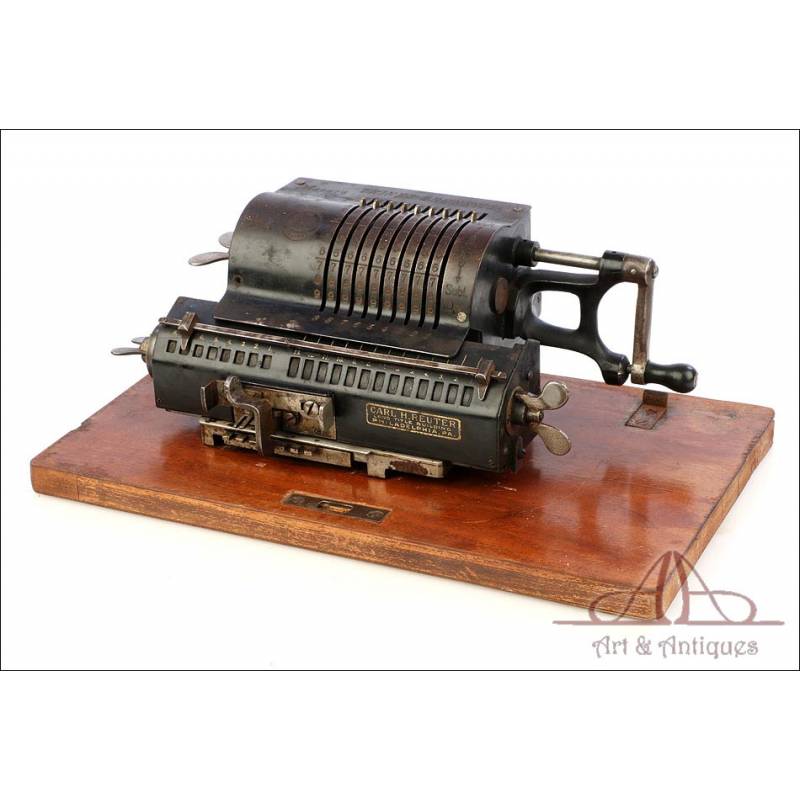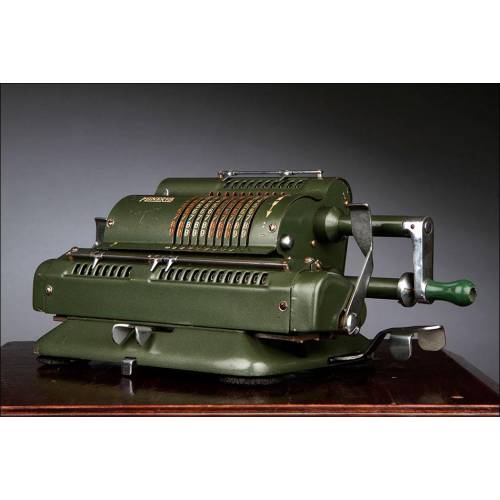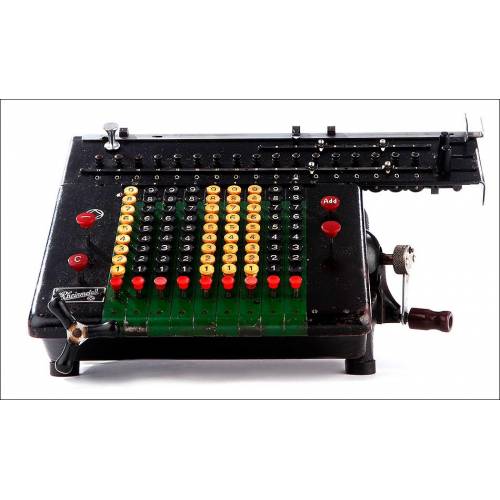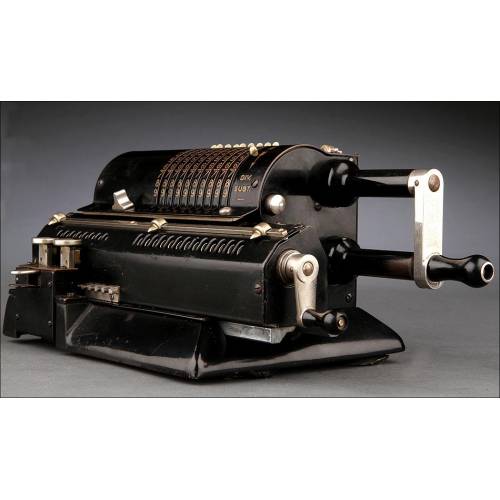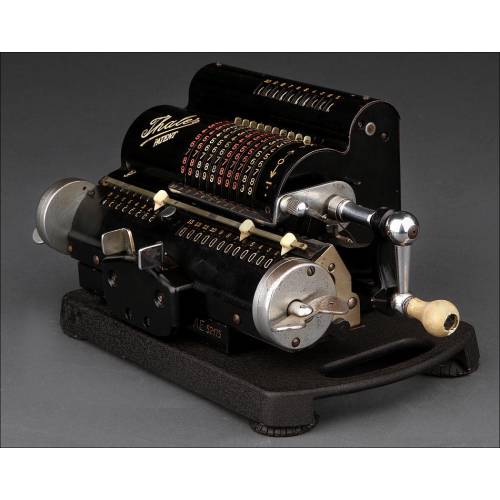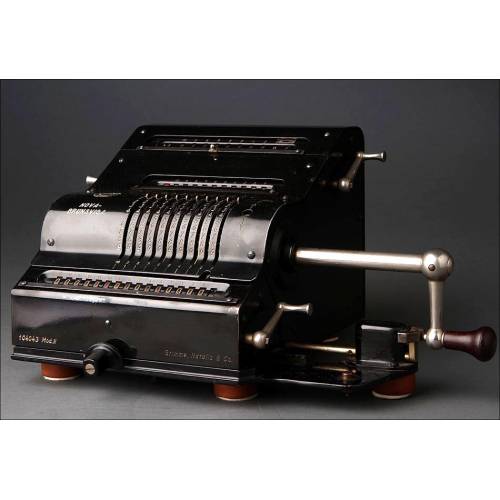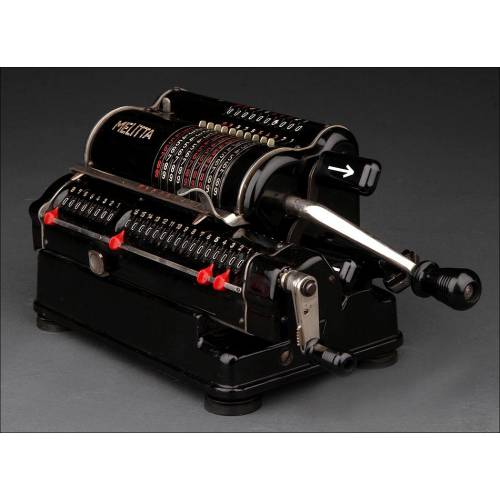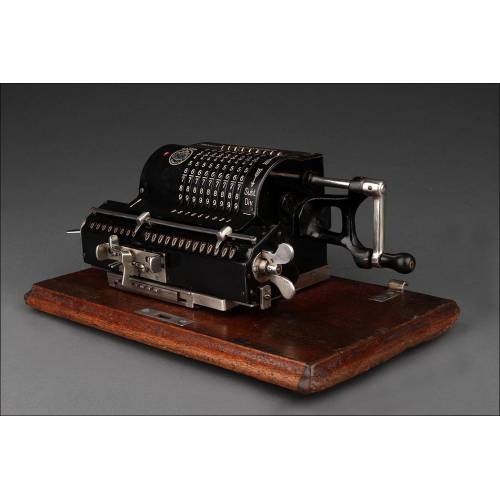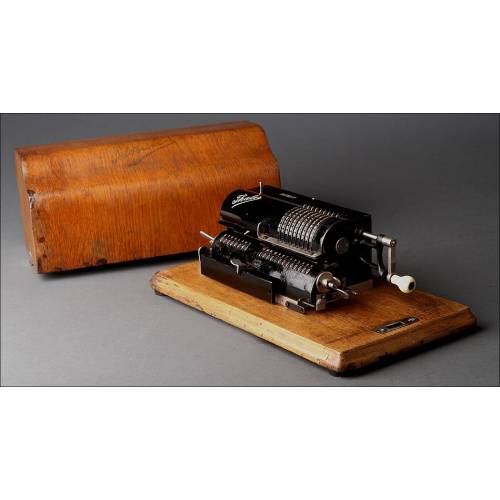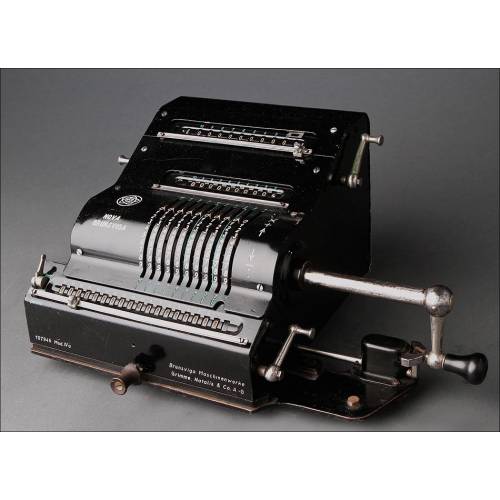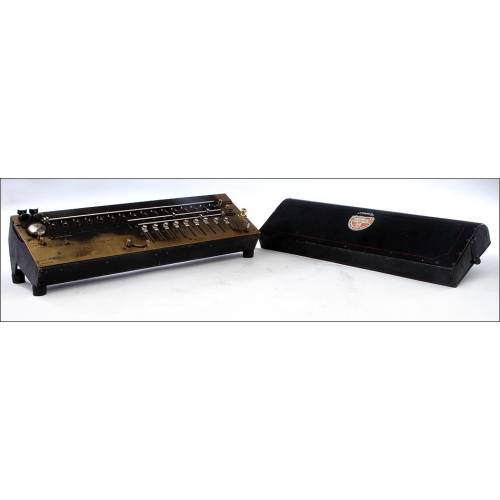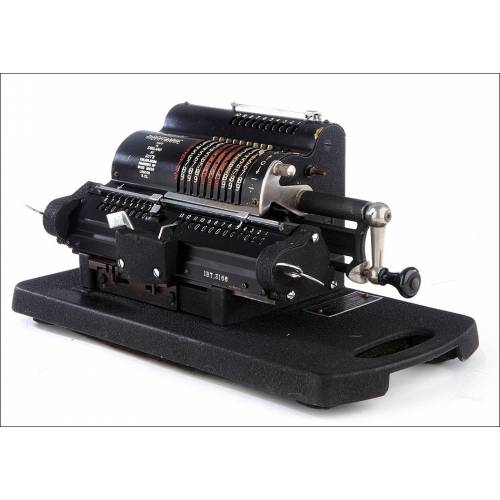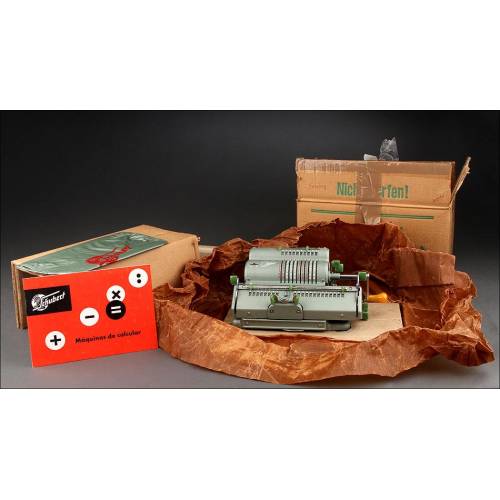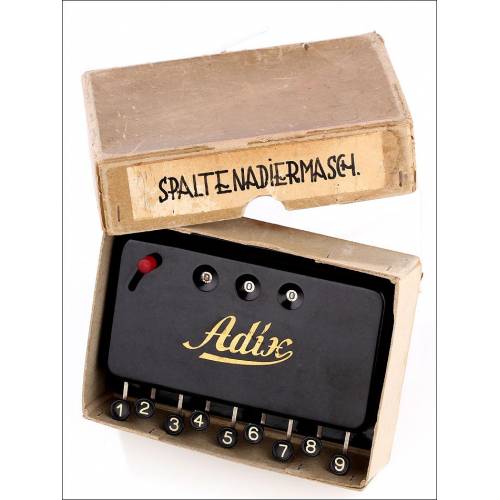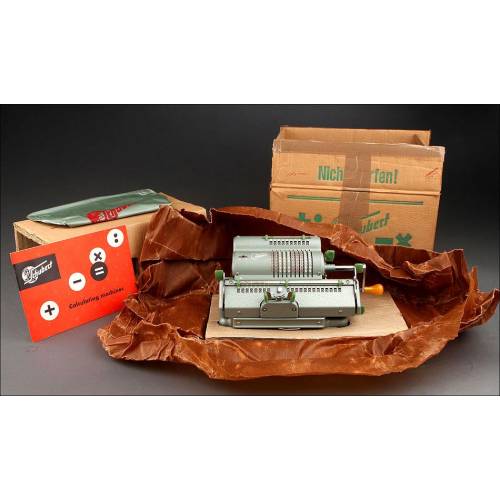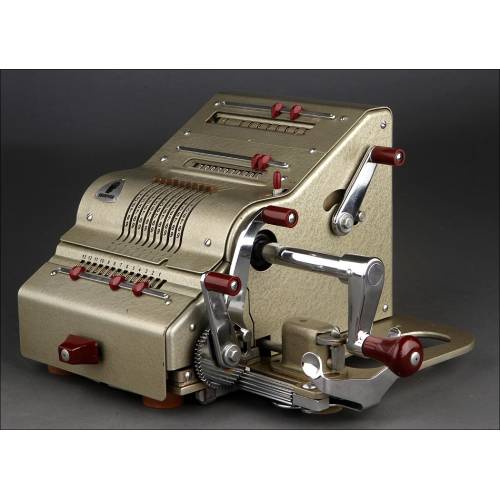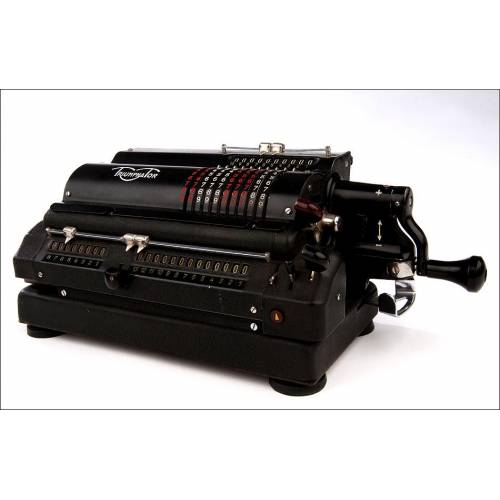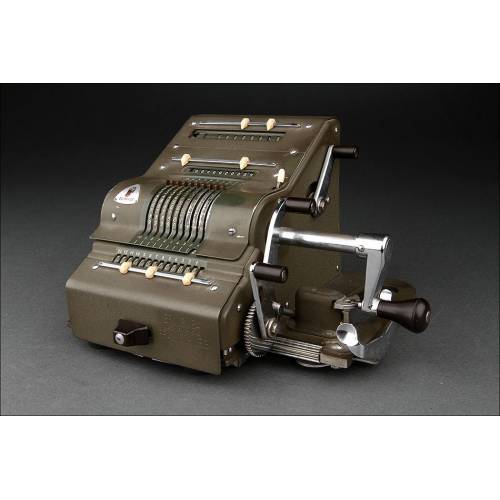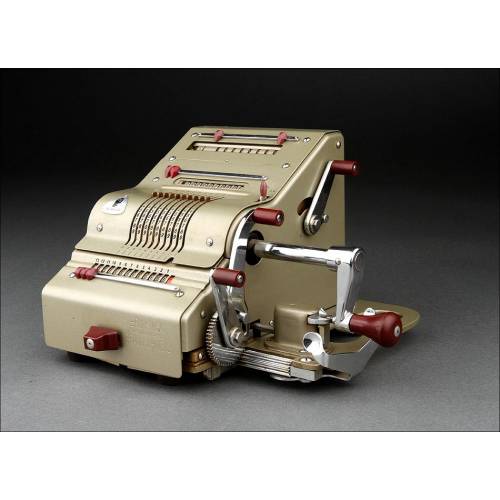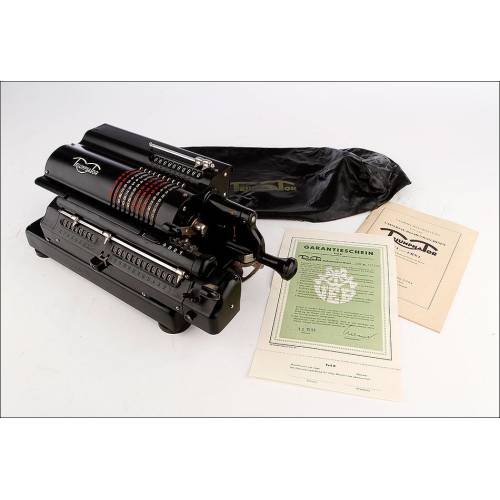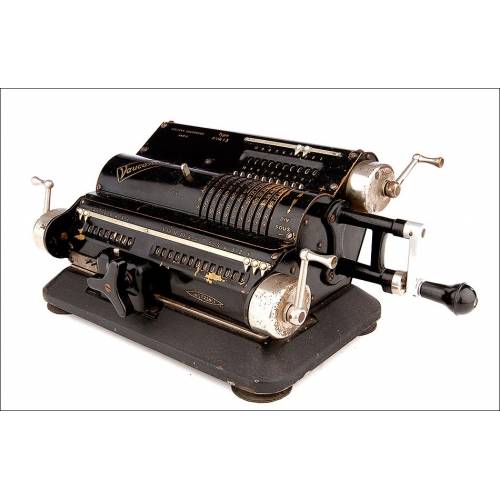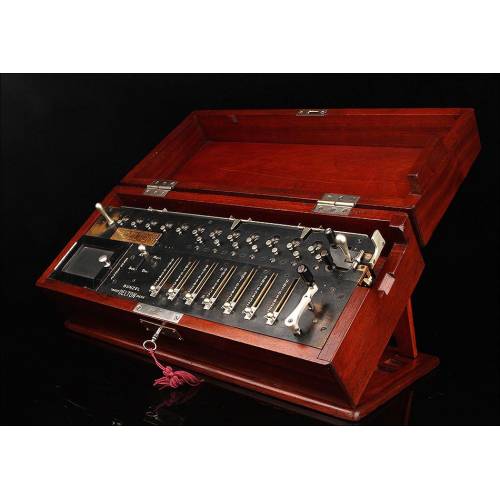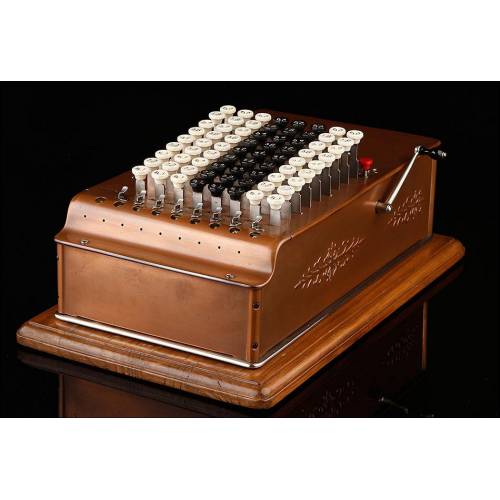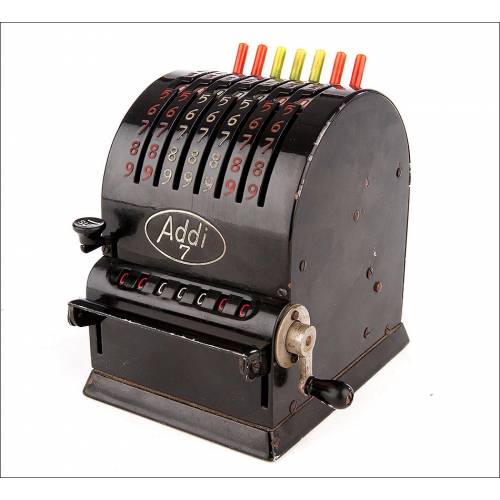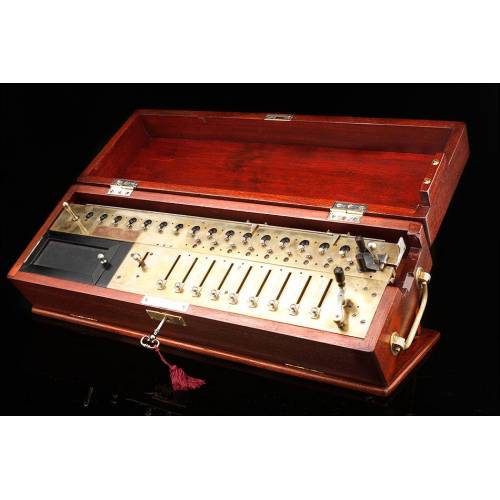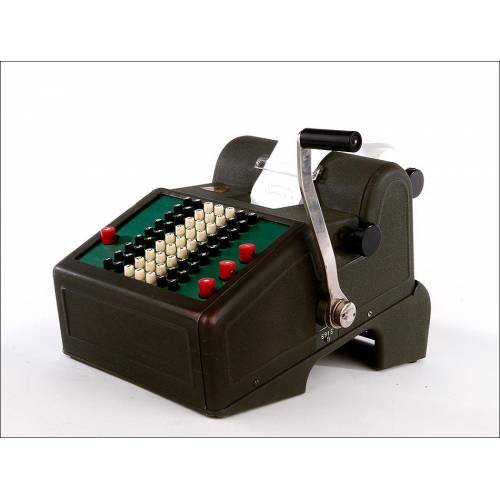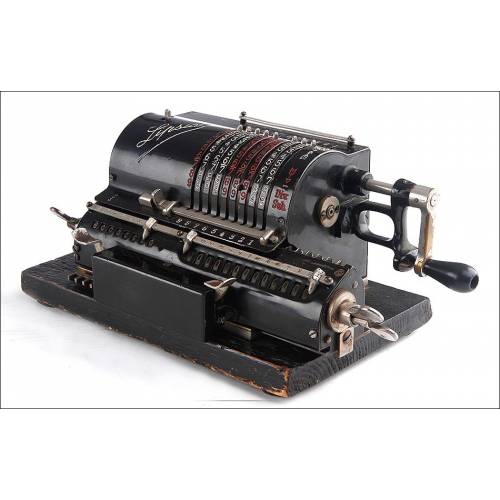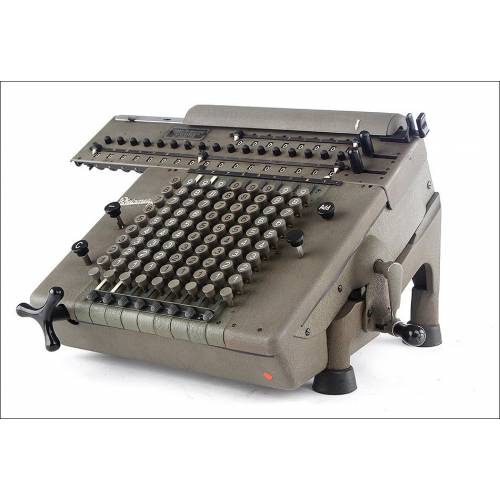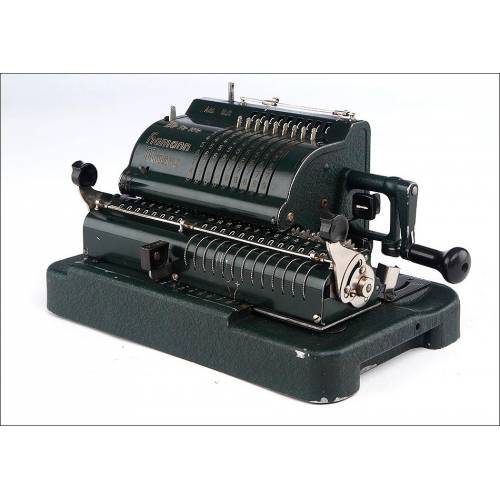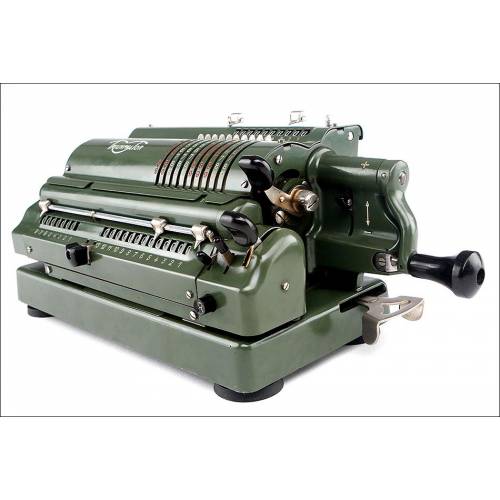C-973
Antique Trinks Brunsviga Mechanical Calculator. Germany, Circa 1920
Authentic Trinks Brunsviga mechanical calculator original from the 1920s. In fine working order. Collectors piece.
Sold!
Antique Trinks Brunsviga mechanical calculator made in Germany circa 1920 and in working order. Aesthetically the calculator shows clear signs of the trace of time, something logical considering this piece is around one hundred years old and has been used through many decades. Nevertheless, the pinwheel mechanism works very well and makes it possible to perform the basic arithmetic operations (addition, subtraction, multiplication and division) and get exact outcomes. On the other hand, the aesthetical recuperation of this calculator can be a fascinating project for any lover of restoration of antiques. The device stands on its original varnished-wood base, which remains in good condition. The metal casing that protects the mechanism bears a black-enameled finish. The enamel is worn in different parts and has lost its glow, just like the white paint that once enhanced the logo and the numerals. Even so, the digits and the inscriptions are clearly legible and make it possible to use the calculator. At the front side, the bottom right corner bears an inscription in golden lettering with the name of an American distributor. At the back of the machine we can see two well-preserved golden decals with the North American patent and the manufacturers name, located in Germany. This antique Trinks Brunsviga is a very special piece, worthy of a good restoration project which helps it recover its original splendor. Dimensions: Base: Width: 15.6 in / 39 cm. Depth: 9 in / 22.5 cm. Calculator: Top Width: 6.4 in / 16 cm. Carriage: 9 in / 22.5 cm. Height: 4.8 in / 12 cm.Brunsviga Calculators History The firm Grimme, Natalis & Co (GNC) was established in 1871 to build sewing machines and domestic appliances at Braunschweig, Germany. In 1892 engineer Franz Trinks was instrumental in securing the manufacturing rights to the Odhner calculator patents. The first machines were built according to W.T. Odhner's 1890 design and were distributed under the brand name "Brunsviga" (Latin for Braunschweig). Trinks continued to develop and refine the Brunsviga calculator over a period of almost 30 years. The "new Brunsviga" range appeared in 1925, and the "13-series" in 1927. Production resumed after the 1939-45 war with a new range of 13-series machines, a motorised version of the stepped-drum machine, and a range of small adding machines. Grimme, Natalis & Co was originally established as a "Commanditgesellschaft auf Aktien". On its fiftieth anniversary in 1921 it became Grimme, Natalis & Co AG. In 1927 the name was changed to "Brunsviga Maschinenwerke Grimme, Natalis & Co AG", and later to just "Brunsviga Maschinenwerke AG" In 1957 Brunsviga entered into an agreement with Olympia Werke AG, which led ultimately to the company being absorbed into Olympia in 1959. Production continued for a time as the Brunsviga Division of Olympia, before coming to an end in the late 1960s. About half a million Brunsviga machines were produced over a period of almost eighty years. The Trinks-Brunsviga calculators work with the pinwheel system developed by W.T. Odhner in the 1870s. It was inspired in turn by the arithmometer designed by Leibniz in the 16th century.

